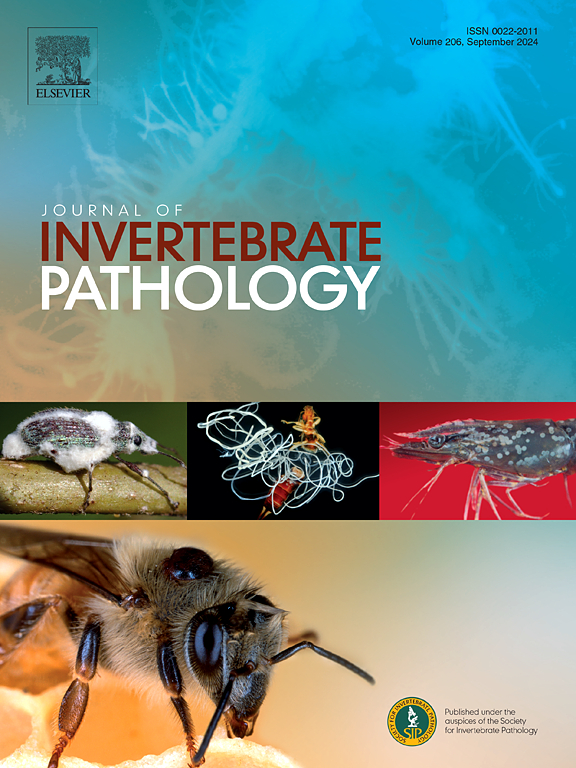Entomopathogenic fungi as guardians of elm trees: A review of dual-action biocontrol agents targeting Scolytus spp. and their associated Ophiostoma species
IF 2.4
3区 生物学
Q1 ZOOLOGY
引用次数: 0
Abstract
The elm tree, an integral component of riparian ecosystems worldwide, has experienced significant mortality due to Dutch elm disease (DED). This review highlights that only 20 out of the 127 identified species within the genus Scolytus have been reported as vectors of DED. A critical research gap exists in the use of entomopathogenic fungi (EPFs) for controlling Scolytus species that vector DED. Current research has primarily focused on S. scolytus, S. multistriatus, and S. schevyrewi, identifying fourteen EPF species as effective biocontrol agents. Notably, only five of these EPFs, including Metarhizium anisopliae, Beauveria bassiana, Nomuraea rileyi, Trichoderma harzianum, and T. polysporum, have been proposed as antifungal agents against Ophiostoma ulmi and O. novo-ulmi. Additionally, environmental factors, such as temperature and UV exposure, along with synthetic substances like pesticides and fungicides, can significantly impact the efficacy of EPFs in biocontrol applications. The paucity of information on the dual control of elm bark beetles and associated pathogenic Ophiostoma species is notable. Despite the limited scope of existing studies, they underscore the dual benefits of EPFs as both bio-fungicides and bio-insecticides. This review posits that EPFs present an effective approach to integrated pest management for DED and advocates for a renewed focus on research into this promising strategy, taking into account environmental factors that could enhance their efficacy.

作为榆树守护者的昆虫病原真菌:针对树霉及其伴生蛇瘤双效生物防治剂的研究进展
榆树是世界范围内河岸生态系统的一个组成部分,由于荷兰榆树病(DED),榆树的死亡率很高。这篇综述强调,在鉴定的127种猪头属中,只有20种被报道为DED的媒介。在利用昆虫病原真菌(EPFs)控制传播DED的柱头虫方面存在一个关键的研究空白。目前的研究主要集中在S. scolytus, S. multistriatus和S. schevyrewi上,确定了14种EPF作为有效的生物防治剂。值得注意的是,这些epf中只有绿僵菌、球孢白僵菌、野孢菌、哈兹木霉和多孢霉这5种被认为是对蛇口霉和O. novoo -ulmi的抗真菌剂。此外,环境因素,如温度和紫外线照射,以及杀虫剂和杀菌剂等合成物质,可以显著影响epf在生物防治应用中的功效。关于榆树树皮甲虫及其相关病原菌的双重防治的资料不足。尽管现有研究的范围有限,但它们强调了EPFs作为生物杀菌剂和生物杀虫剂的双重益处。这篇综述认为,环境保护基金是一种有效的综合病虫害管理方法,并主张重新关注对这一有前途的战略的研究,考虑到可能提高其效力的环境因素。
本文章由计算机程序翻译,如有差异,请以英文原文为准。
求助全文
约1分钟内获得全文
求助全文
来源期刊
CiteScore
6.10
自引率
5.90%
发文量
94
审稿时长
1 months
期刊介绍:
The Journal of Invertebrate Pathology presents original research articles and notes on the induction and pathogenesis of diseases of invertebrates, including the suppression of diseases in beneficial species, and the use of diseases in controlling undesirable species. In addition, the journal publishes the results of physiological, morphological, genetic, immunological and ecological studies as related to the etiologic agents of diseases of invertebrates.
The Journal of Invertebrate Pathology is the adopted journal of the Society for Invertebrate Pathology, and is available to SIP members at a special reduced price.

 求助内容:
求助内容: 应助结果提醒方式:
应助结果提醒方式:


